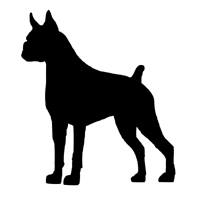
We weren’t born with a show leash in our little hands, either, and well remember the days before we knew the difference between a occiput and an octopus. If the years have taught us anything, however, is that it really does matter. Why?
Because your dog trusts you to take care of her. She needs you to know the signs of stress (called “calming signals”) and she needs you to know how to explain to the vet that it’s not her paw that hurts, but her hock. An informed owner is a good owner, and this stuff isn’t rocket science. Yes, it may take years for most of us to evaluate a dog according to its standard, but we’re not asking you to judge a show dog. We’re suggesting that you empower yourself with knowledge not just for your dog, but as a steward of all purebred dogs.
To that end, here is a ridiculously short tutorial on the difference between a “deep chest,” and a shallow one – and remember our mantra here: Know what’s correct for your breed.
In many breeds, a deep chest is one that is level with the dog’s elbows. The way some of us ascertain this is by simply putting our hand in-between our standing dog’s front and groping (your dog will love it). Feel where the dog’s elbows are, and then feel if the dog’s chest is level with it. If it’s not, it’s a “shallow brisket” that shows no “fill.” Be aware that young dogs don’t “drop” their chest until they’ve matured, and when that happens has a lot to do with your breed and their line.
There are some dandy books on structure out there, and one of our favorites is “Practical Canine Anatomy and Movement” by Claudia Waller Orlandi, PhD.
Image of a Boxer whose chest is level with her elbows
